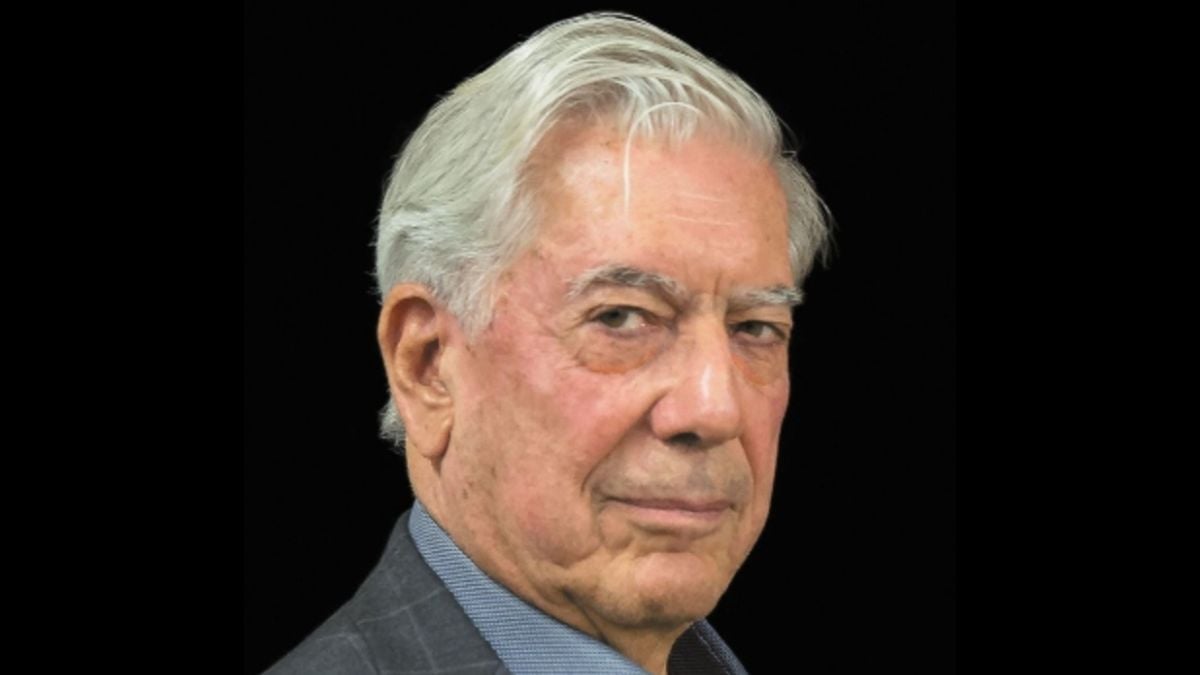
Mario Vargas Llosa, Peruvian writer, journalist, and politician, died on April 13, 2025 at the age of 89. The news was confirmed by his children, Álvaro, Gonzalo, and Morgana, through a statement on social media that quickly went viral. The announcement of his death also interrupted the live broadcast of the Universitario vs. Melgar match in Peru’s Liga 1, showing the national impact of his passing.
Vargas Llosa was awarded the 2010 Nobel Prize in Literature and was one of the most influential intellectuals in the Spanish-speaking world. His death marks the end of an era in Latin American literature.
This is the message released by the Nobel laureate’s children:
With deep sorrow, we announce that our father, Mario Vargas Llosa, passed away today in Lima, surrounded by his family and in peace. His passing will sadden his relatives, friends, and readers around the world, but we hope they may find comfort, as we do, in the fact that he enjoyed a long, diverse, and fruitful life, and leaves behind a body of work that will outlive him. We will proceed in the coming hours and days according to his instructions. There will be no public ceremony. Our mother, our children, and we ourselves trust we will have the space and privacy to say goodbye as a family and in the company of close friends. His remains, as was his will, will be cremated.
Lima, April 13, 2025
Álvaro, Gonzalo and Morgana Vargas Llosa
Cause of death of Mario Vargas Llosa
To date, the writer’s family has not released the cause of death. In 2018, the Nobel Prize winner suffered a fall that affected his health.
What Was Mario Vargas Llosa’s Net Worth at the Time of His Death?
Peruvian Nobel laureate Mario Vargas Llosa—renowned for his prolific career as a novelist, journalist, political figure, and academic—had an estimated net worth of $500,000 at the time of his passing.
Born in March 1936 in Arequipa, Peru, Vargas Llosa rose to global prominence in the 1960s as part of the Latin American Boom, a literary movement that revolutionized Spanish-language literature. He became a household name thanks to landmark novels such as The Time of the Hero, The Green House, and Conversation in the Cathedral.
Biography of Mario Vargas Llosa
Mario Vargas Llosa was born on March 28, 1936, in Arequipa, Peru, into a middle-class family. He was the son of Ernesto Vargas Maldonado and Dora Llosa Ureta, and he grew up without his father, as his parents separated before his birth. Until he was ten, he was led to believe that his father had died. It wasn’t until 1947 that he met his father for the first time, in Piura.
He spent part of his childhood in Cochabamba, Bolivia, where his maternal grandfather managed a cotton estate. There, he learned to read and write and completed up to fourth grade at La Salle School. Upon returning to Peru, he moved to Piura and later to Lima to continue his studies.
His relationship with his father was marked by episodes of violence and constant tension. “My father hated my calling to be a writer. He didn’t understand it. He thought it was a waste of time,” Vargas Llosa would later say in interviews.
What inspired Mario Vargas Llosa to become a writer?
Vargas Llosa discovered his passion for literature at a young age. He was sent to the Leoncio Prado Military School in Callao from 1950 to 1951. The experience was tough but formative. There, he solidified his literary vocation and lived through episodes that would later become key elements in his first major novel: The Time of the Hero (1963), a work that criticized the military system’s violence and revolutionized Peruvian literature.
At 16, he was already working as a journalist for the newspapers La Crónica and La Industria. In 1952, he wrote his first play, The Escape of the Inca, which was staged in a Lima theater. From a young age, he combined literary writing with journalism.
What did Mario Vargas Llosa study?
He studied Law and Literature at the National University of San Marcos. There, he worked as an assistant to historian Raúl Porras Barrenechea and was briefly involved in student politics, first with the communist left (Cahuide) and then with the Christian Democratic Party.
In 1958, he received a Javier Prado scholarship to study at the Complutense University of Madrid, where he would later earn a Ph.D. in Philosophy and Literature. From then on, he led a cosmopolitan life that took him to Paris, London, New York, and Barcelona, cities where he worked as a journalist, translator, and university professor.
What are Mario Vargas Llosa’s most important works?
Mario Vargas Llosa was a prolific author. His literary career includes novels, essays, plays, and journalistic articles. His most recognized works include:
- Los jefes (1959)
- The Time of the Hero (1963)
- The Green House (1966)
- The Cubs (1967)
- Conversation in the Cathedral (1969)
- Captain Pantoja and the Special Service (1973)
- Aunt Julia and the Scriptwriter (1977)
- The War of the End of the World (1981)
- Who Killed Palomino Molero? (1986)
- The Storyteller (1987)
- In Praise of the Stepmother (1988)
- Death in the Andes (1993)
- The Notebooks of Don Rigoberto (1997)
- The Feast of the Goat (2000)
- The Way to Paradise (2003)
- The Bad Girl (2006)
- The Dream of the Celt (2010)
- The Discreet Hero (2013)
- The Neighbourhood (2016)
- Harsh Times (2019)
- I Dedicate My Silence (2023)
Many of these novels are set in Peru and reflect the social, political, and personal tensions of their time. However, he also explored international settings, such as in The War of the End of the World (set in Brazil) and The Feast of the Goat (Dominican Republic).
Mario Vargas Llosa and Politics
Vargas Llosa had a complex relationship with politics. In his youth, he sympathized with communism, but by the 1980s he turned to liberalism. In 1990, he ran for the presidency of Peru representing the Democratic Front, a center-right coalition. He lost in the second round to Alberto Fujimori.
In later years, he became a staunch defender of free markets, democracy, and individual rights. In 1994, he was appointed a member of the Royal Spanish Academy and won the Cervantes Prize, the most prestigious award in the Spanish language. He was also a regular columnist for the newspaper El País and the magazine Letras Libres.
What awards did Mario Vargas Llosa receive?
He received numerous awards and honors. Among the most notable:
- Nobel Prize in Literature (2010)
- Cervantes Prize (1994)
- Prince of Asturias Award for Literature (1986)
- Biblioteca Breve Prize (1962)
- Rómulo Gallegos Prize (1967)
- Planeta Prize (1993)
In 2011, King Juan Carlos I of Spain granted him the title Marquis of Vargas Llosa, and in 2021, he was admitted into the French Academy, becoming the first non-French-speaking writer to join the institution.
His work has been translated into over 30 languages and has been widely adapted for film, theater, and television.
Mario Vargas Llosa’s Partners and Personal Life
In 1955, Vargas Llosa married Julia Urquidi, who was ten years older and the sister of his maternal aunt by marriage. This relationship inspired his novel Aunt Julia and the Scriptwriter. They divorced in 1964.
In 1965, he married his cousin Patricia Llosa, with whom he had three children: Álvaro, Gonzalo, and Morgana. The marriage lasted five decades, but they separated in 2015 when he began a relationship with socialite Isabel Preysler, which made headlines in Spain and Latin America.
Regarding his family life, Vargas Llosa remained private, although he consistently expressed love for his children and grandchildren. In 2023, he officially retired from journalism after publishing his final column.










